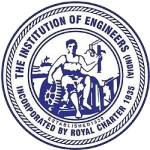Radar Cross Section Estimation for a Complex Shaped Objects Using SPSG and PO Methods
Radar Cross Section Estimation
Abstract
Radar plays a crucial role in the present war scenario and defence applications. RCS is an important parameter that defines the target cross sectional area. The higher the RCS value, the greater the target detection capability of the Radar. RCS estimation mainly depends on the size, geometry, orientation of the object towards the Radar, and also the material of which the object is made. Among these, the size, geometry, and orientation of the object are considered to be the most significant features in RCS estimation process. RCS determination is an important task for identifying or classifying the objects as either friend or foe. Accurate estimation of Radar Cross Section (RCS) at high frequencies and reduction of radar perceivability at different frequencies is a challenging task. An efficient algorithm is required that can run on a standard PC which provides RCS predictions within a short time. In this paper, Spherical Polar Scattering Geometry (SPSG) and Physical Optics (PO) based algorithms are proposed to estimate RCS of complex structured objects.
Downloads
References
Kerr.D.E., “Propagation of Short Radio Waves”, Radiation Laboratory Series Vol. 13, Chapter 6, McGraw- Hill, Newyork, 1951.
Blake.L.V., “Calculation of the Radar Cross Section of a Perfectly Conducting Sphere”, Naval Research Laboratory(NRL), Washington DC, July,1972.
E.F Knott, “Radar Cross Section,” Second Edition,Archtech House, 1993.
Skolnik.M.I., “Introduction to Radar Systems”, Second Edition, p.41, McGraw- Hill,Newyork, 1962.
Skolnik.M.I., “Radar Handbook”, Second Edition, Chapter 11,p.11.1, McGraw-Hill, New York, 1990.
Simon Kingsley, “Understanding Radar Systems,” Second Edition.
Bassem R.Mahafza, “Radar system Analysis and Design using Matlab,” Second edition , pp.100-102, Jan 2000.
Nicholas C.Currie, “Techniques of Radar Reflectivity Measurement”, p.27, Archtech House, 1984.
Jenn.D.C, “Radar and Laser Cross Section Engineering” Naval Postgraduate School, California, 2005.
Y Gao, J Shi, J Wang, “The calculation of backscattering radar cross section of plasma spheres,” Institute of Electronic Engineering, Hefei, IEEE, 2000.
Sasibhushana Rao Gottapu “Monostatic RCS estimation of missile shaped model using PO method” in International conference on Advanced Materials Technologies (ICAMT-2016), 27th -28th Dec 2016.
Swathi Nambari “Estimation of RCS for a perfectly Conducting and plasma spheres” , Springer India, 2016
Swathi Nambari “Radar RCS estimation of a perfectly conducting sphere obtained from a Spherical Polar Scattering Geometry” IEEE 2015.
Swathi Nambari “RCS Computation of Shapes Obtained by Cascading Simple Objects Using PO Method and Results Obtained Using Matlab Simulation Software” in International Journal of Electronics and Communication Technology (IJECT), Vol 4 Issue 2, Apr-Jun 2013.
Swathi Nambari “Development of Algorithm for RCS estimation of a perfectly conducting sphere using spherical polar scattering geometry” in International Journal of Applied Engineering Research, Vol 12, No 11,pp-2656-2661, 2017.
Kolluri Sri Ranga Rao, Gottapu Sasibhushana Rao, Swathi Nambari “RCS Estimation of Sphere with Dent using SPSG including Error Analysis in Stealth Technology”, IEEE International Conference on Range Technology (ICORT-2019), Integrated Test Range (ITR), Defence Research and Development Organization (DRDO), Chandipur, Odisha, India, 15th - 17th February 2019.
Copyright (c) 2021 Dr Swathi Nambari

This work is licensed under a Creative Commons Attribution 4.0 International License.
I/We agree with the provision of the Bye-Law 118 of The Institution of Engineers (India) which states that copyright of each paper published in Institution Journal or Annual Technical Volume in full or in Abstract at its centres shall lie with the Institution.

